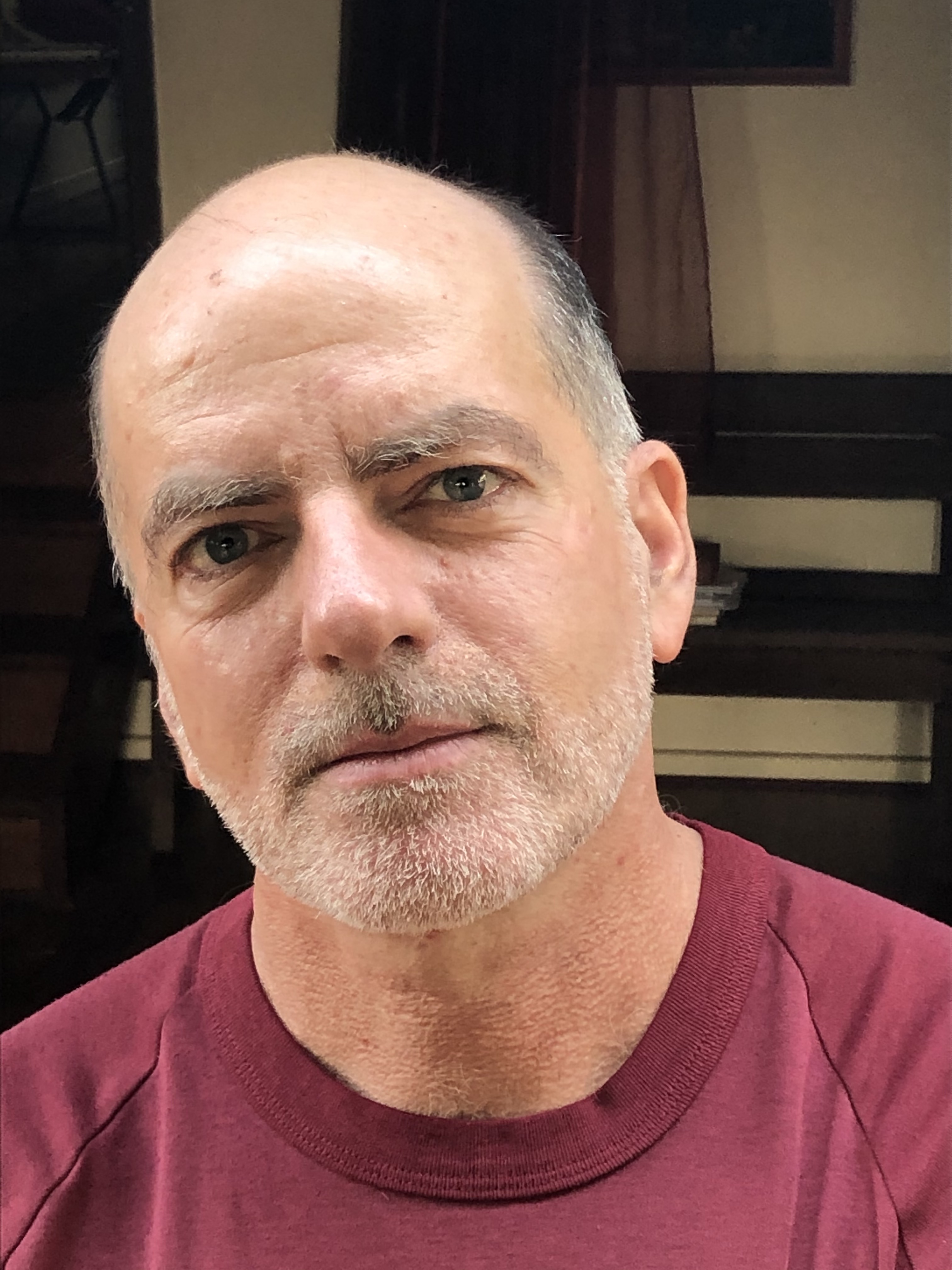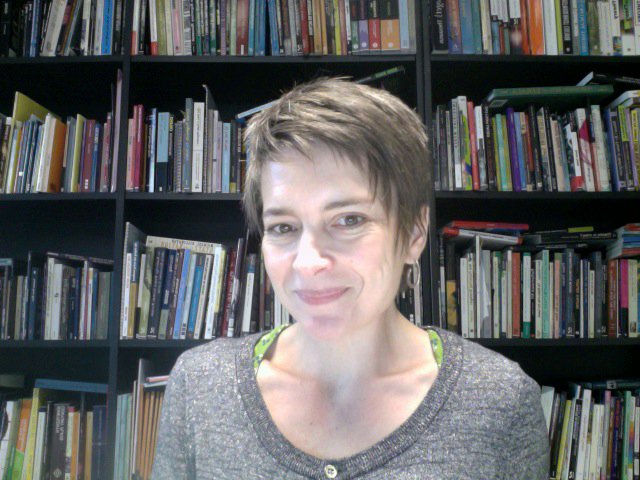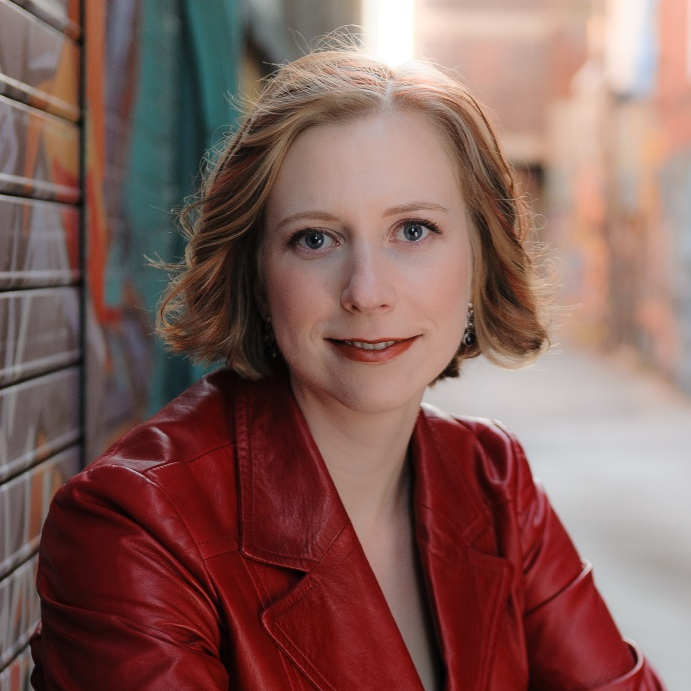Wednesday 7 April 2021
Welcome to the 2021 CCCW Virtual Symposium program guide for Wednesday 7 April 2021. The event will commence with an In Conversation Session with Andrew Bovell and Dan Giovannoni who will be discussing the process of adapting Christos Tsiolka's iconic novel Loaded to screen and stage, respectively. This will be followed by panels on Novels to Stage, Transmedial Adaptation, Adapting the Memoir and Novels to Screen. In the evening listen to a keynote address by world leading adaptation theorist, Professor Frances Babbage who will be discussing Adaptation and the Australian Novel. On this page you will find a detailed overview and reigstration links to all sessions being held on day two of the CCCW Virtual Symposium 2021. Please follow this link to view the program for Tuesday 6 April 2021.
In Conversation with Andrew Bovell and Dan Giovannoni
9.30–10.30am
Panel Three: Novels to Stage
10.45am–12.15pm
Panel Four: Transmedial Adaptation
1–2.30pm
Panel Five: Adapting the Memoir
2.45–4.15pm
Panel Six: Novels to Screen
4.30–6pm
Keynote Address: Professor Frances Babbage
6.30–7.30pm
 Associate Professor Stephen Carleton
Associate Professor Stephen Carleton
Stephen is the Director of the UQ Centre for Critical and Creative Writing and a Brisbane-based playwright and academic. His plays have been produced across Australia and won awards including the Griffin Theatre Award (2015) for The Turquoise Elephant, the Matilda Award for Best New Australian Play (2017) for Bastard Territory, and the Patrick White Playwrights’ Award (2005) and New Dramatists’ Award (2006) for Constance Drinkwater and the Final Days of Somerset. Those plays and others including musical Joh for PM (2017, with Paul Hodge), and The Narcissist (2007), have been shortlisted for a range of awards including the Patrick White Playwrights’ Award, the Queensland Premier’s Drama Award, Queensland Literary Awards (Drama), and two AWGIEs.
Helen is the Deputy Director of the UQ Centre for Critical and Creative Writing and a Senior Lecturer of Creative Writing at the School of Communication and Arts. She has won the World Fantasy Award, the British Fantasy Award and the Shirley Jackson Award for her two collections of short stories. Her debut novel The Migration released last year argued for the need to remain hopeful, even in the worst circumstances. It was one of The Guardian’s top science fiction books of the year and was recently optioned by Clerkenwell Films.
Chris is an Australian theatre and cultural historian teaching and researching in the Drama program in the School of Communication and Arts, currently working on an ARC DECRA-funded project about the origins of live performance subsidy in Australia between 1949 and 1975. In this work, as in all of his research, Chris is particularly interested in what funded cultural output can tell us about national pre-occupations and anxieties. Along with this historical focus, Chris is working on a book project about contemporary Australian mainstage theatre after the Kevin07 election, as well as the Australian component of a project on the cultural history of the Eurovision Song Contest outside Europe. Chris's teaching responsibilities at UQ include theatre history, performance production, and script analysis. Chris welcomes applications for higher degree research at MPhil or PhD level in any of these areas.
Adapting Loaded

9.30–10.30am
Presented by Andrew Bovell and Dan Giovannoni
Chaired by Associate Professor Stephen Carleton
Watch the session:
 Abstract:
Abstract:
Andrew Bovell and Dan Giovannoni join Stephen Carleton in discussion about their two very different experiences of adapting Christos Tsiolkas's cult novel, Loaded, to screen and stage: as the film Head On in 1998, and the audio performance Loaded at Melbourne's Malthouse Theatre in the wake of the 2020 COVID lockdown. Their versions of Tsiolkas's much-loved in-yer-face queer classic couldn't be more different in logistical terms: a social realist film shot on location in Melbourne vs a one-person monologue meant originally for the stage, but forced by circumstance into audio recording. Both versions pay due homage to the parent text, but time itself has also intervened - over two decades separate these two adaptations of Tsiolkas's 1995 novel - and has affected the ways in which the story has been reinterpreted; the diverse cultural identities of all three writers is no doubt another factor influencing the nature of the adaptation process. Bovell and Giovannoni are here to answer your questions about all this and more!
Novels to Stage

10.45am–12.15pm
Chaired by Dr Chris Hay
Watch the session:
Paper 1 – Re-visioning the Australian canon in stage adaptations
Presented by: Dr Chris Hay, The University of Queensland
Abstract:
In this paper, I want to argue that recent stage adaptations of canonical Australian novels have functioned in part to re-vision Australian national myths. Adrienne Rich's definition – “re-vision – the act of looking back, of seeing with fresh eyes, of entering an old text from a new direction” (1972, 18) seems particularly productive for thinking about adaptation, and I focus particularly on the third part and argue that stage adaptations allow for critical intervention to be made flesh.
To do so, I will use the case studies of Tom Wright's adaptation of Picnic at Hanging Rock (2016) and Declan Greene's of Wake in Fright (2019), in which narrative control is wrested by somatically othered bodies. In offering this potential, both texts illustrate Rich's assertion that “we need to know the writing of the past, and know it differently than we have ever known it; not to pass on a tradition but to break its hold over us” (1972, 19).
This paper also draws on Frances Babbage's application of Rich to the theatre, by arguing that these adaptations further serve to re-vision national myths through their narrative intervention and casting choices. “The medium of drama inherently invites exploration of multiple voices and competing subjectivities, and, since performance demands that temporal and spatial dimensions also be confronted, their conventions may be exposed and challenged through stage action” (Babbage 2011, 28). By playing the masculine, heteronormative narrative of both texts through somatically othered bodies, we are invited to critique the Australian canon.
Paper 2 – "Where are you from, then?" Narrative voice and otherness in Declan Greene's Wake in Fright
Presented by: Dr Robin Dixon, The University of Sydney
Abstract:
A fundamental challenge of adapting a novel for the stage must be the translation of authorial and/or narrative voice from a typically univocal form to a form that at least has the potential for polyvocality. While this may seem a relatively straightforward process when adapting a novel into a work for solo performance—the actor adopting the authorial voice in a familiar storytelling mode—the undeniable embodied presence of the performer, and the ways in which the narrative is framed, can complicate adaptation significantly. Declan Greene’s 2019 adaptation of Kenneth Cook’s 1961 novel Wake in Fright provides a fascinating recent example of these concerns. In this production, constant shifts in (pseudo-) authorial voice, narrative modes, accent, framing and embodiment in Zahra Newman’s performance produced a highly disconcerting and provocative set of effects with striking contemporary resonances. This paper offers an analysis of a Sydney Opera House performance of this adaptation, concentrating particularly on Newman’s explicit role and status as “outsider”.
Paper 3 – "Indigenising the Colonial Narrative: Leah Purcell's The Drover's Wife
Presented by: Professor Denise Varney, The University of Melbourne
Abstract:
The white woman is a contested figure in Australian theatre and in recent Indigenous poetry. She was the colonial mistress of indentured Indigenous servants and labourers, and a conflicted embodiment of competing late 19th century identities. This paper discusses Leah Purcell’s adaptation of Henry Lawson’s ‘much-loved’ story ‘The Drover’s Wife’ in a significant new Australian play that radically historises the story of the colonial white woman. A Goa-Gunggari-Wakka Murri woman from Queensland and a widely known actor, writer, and director of Australian theatre, film and television, Purcell also performs the main role. Purcell’s adaptation retains the original story’s nineteenth century bush setting but replaces the comic scenario of the original with a carefully woven drama that gradually reveals the woman’s mixed-race heritage, and that of her children. As a white woman, Purcell’s drover’s wife is subjected to sexual violence in a lawless colony, but her discovery of her Indigenous heritage exposes her to racial violence and the loss of her children. In an effective transposition of human and animal, the snake from the original story is an Aboriginal man, Yadaka, himself a fugitive, whose dying insights help the woman acknowledge her identity.
The paper argues that Purcell’s adaptation of the iconic colonial story breaks new ground by not only deconstructing the certainties that underpin Lawson’s story, but shows how the white settler identity is inseparable from its historic encounter with Indigenous peoples. In addition, The Drover’s Wife (2016) is a key play by an influential Indigenous woman who performatively deconstructs the singular category of the white woman and offers her the gift of a rich cultural heritage.
Transmedial Adaptation

1–2.30pm
Chaired by Dr Helen Marshall
Watch the session:
Paper 1 – Transmedial Australian Literature
Presented by: Professor Kim Wilkins, The University of Queensland
Abstract:
An increasing convergence across media forms is one of the characteristics of twenty-first century publishing and, as with other publishing industry transformations, genre fiction is at the forefront of this shift, both driving change and being shaped by change. Evaluating Australian genre fiction’s role in the new transmedia context allows us to see and understand the dynamic relationship between content of books (the textual) and the way they are made public (the industrial). The traditional view of literary adaptation, which might imagine a printed text written by a single author on one side and a visual medium with dispersed authorship on the other, is giving way to a new expectation that adaptation takes place across multiple media, shapes authorship, and is highly responsive to audience engagement. Australian books in the most popular genres in the market (e.g. romance, crime, and fantasy) may be “born convergent,” positioned to take advantage of successful marketing channels established by other book-led franchises, and to leverage increasingly participatory audiences across platforms. This paper focusses on The Force Unleashed, an adaptation in the Star Wars universe by Sean Williams, and the Miss Fisher Mysteries, adapted from the crime novels of Kerry Greenwood.
Paper 2 – Adapting Mem Fox to Audiobook
Presented by: Emily Baulch, The University of Queensland
Abstract:
Australian children’s books are embracing new technologies in the adaptation to new mediums. This paper traces the adaptation of Mem Fox’s best-selling Possum Magic from a picture book through its audiobook variations. Possum Magic has existed as an audiobook on cassette, cd and finally, as a digital file the on Amazon-owned platform, Audible. Its transition echoes the role of audiobooks from a resource for the blind to an educational alternative. The audiobook retains high fidelity to the lyrical simplicity of the original but divorces itself from its iconic pictures. Possum Magic demonstrates how adaptation extends the reaches of texts while retaining Australian authorial voices – albeit not those of our illustrators.
Paper 3– The Women in Black/Ladies in Black: Novel, Musical, Film
Presented by: Emeritus Professor Richard Fotheringham, The University of Queensland
Abstract:
In the 2010s, Madeleine St John's 1993 novel The Women in Black was adapted first as a musical (2015-16) and then a film (2018), both called Ladies in Black. Although there were several Queensland Theatre Company (QTC) and commercial seasons in Brisbane, Sydney, Melbourne and Canberra (and some amateur productions since), the immateriality of live performance means that the musical is now less well remembered, despite its key contribution to bringing both novel and film to wider attention. As well as being a curious case study of traditional source and influence analysis, the three texts invite consideration of style as a key component of adaptation, from St John's light, witty writing through Tim Finn's clever and often very funny lyrics and music to Bruce Beresford's oddly naturalistic (and in my view less successful) take on working in the fashion department of a major Sydney department store in the 1950s.
Adapting the Memoir

2.45–4.15pm
Chaired by Emeritus Professor Gillian Whitlock
Watch the session:
Paper 1 – Memoir and the Monomyth: "Finding a Feminine Truth".
Presented by: Jane Hampson, The University of Queensland
Abstract:
While much contemporary adaptation theory contends that fidelity to a source work need not define an adaptation of literary work to the screen, there remains the issue of adapting true stories that draw on wider cultural memory. In such cases lack of fidelity could be perceived as a lack of integrity, which has both ethical and commercial implications for a film emblazoned with the magic words 'Based on a True Story'.
This paper reflects on my recent work adapting the memoir TAMIL TIGRESS into a feature film screenplay. Written by Tamil-Sri Lankan/Australian author Niromi de Soyza, TAMIL TIGRESS is de Soyza's account of her time as a 17-year-old armed combatant with the Liberation Tigers of Tamil Eelam (The Tamil Tigers). Her story is highly personal, yet intertwined with defining historical events at the dawn of what became a bitter and protracted war. Adapting it required careful consideration of cultural memory, and was further problematised by the context in which it was done: that is Australia's hybrid state/commercial film industry where the monomyth, or ’The Hero’s Journey’ dominates.
As a teenage girl of an oppressed minority, de Soyza was a 'hero' with very little agency. This paper examines how her cinematic journey was mapped through the hyper-masculine terrain of war, using Barbara Creed’s theory of the neomyth, or ‘The Heroine’s Journey’. It addresses the under-theorisation of the feminine and adapted 'truth' and aims, ultimately, to contribute to our understanding of the interplay between gender and narrative form.
Paper 2 – The Legacy of Romulus, My Father
Presented by: Dr Fincina Hopgood, University of New England
Abstract:
Philosopher Raimond Gaita’s acclaimed and much-loved memoir of his childhood in 1950s rural Victoria, Romulus, My Father (first published in 1998), was adapted for the screen in 2007. Directed by Richard Roxburgh and starring Eric Bana, with a script by English poet Nick Drake, the feature film received critical acclaim, multiple awards and extensive commentary, cementing its status in the first decade of the 2000s as a successful adaptation of a landmark Australian literary text. The ‘long tail’ of the film’s circulation extended into the 2010s, with the study of Gaita’s memoir in secondary schools and the 2011 publication of Gaita’s After Romulus, which includes the essay ‘From Book to Film’. Several film and TV adaptations of Australian novels and memoirs followed in its wake, some of these developed by the same company Arenamedia that produced Romulus, My Father led by producer-director-writer Robert Connolly: The Slap, The Turning, and, most recently, The Dry.
This paper considers the legacy of the screen adaptation of Romulus, My Father from two perspectives: its impact on the Australian screen industry as a successful adaptation of a literary work driven by a local production company; and the dialogic relationship between the film’s production team and the memoir’s author. Gaita worked closely with Roxburgh and Drake throughout the scripting process, writing an extended introduction to the published screenplay. While speaking highly of the film’s production team and admiring the finished film in this introduction, Gaita’s subsequent writing in After Romulus reveals his unease with the film’s portrayal of the character Christina, based on his mother who suffered from an undiagnosed mental illness and died by suicide.
In this paper, I examine the dialogic relationship between these three texts of memoir, film, and essay in their shared attempt to empathetically imagine the life of Christine Gaita. I am interested in the legacy of Romulus, My Father for developing empathetic screen portrayals of mental health issues and its contribution to our understanding of the lived experience of mental illness, grief and loss through the shared frames of memoir and movie
Paper 3– Transmitting the Impulse
Presented by: Nicole McCuaig, Griffith University
Abstract:
Ronald McCuaig has been described as Australia’s first modern poet. He wrote about the city, transport, relationships, and domestic life, and his style was compared to that of T.S. Elliot and Ezra Pound. The movement ‘imagism’, invented by Pound, challenged poets to strive for directness, intensity, and immediacy in the work — thus “transmitting the impulse”. McCuaig was so determined to embrace the bold new form that his first anthology Vaudeville could not get a publisher, and printers refused to print the work for fear of prosecution; causing colleagues to describe the reaction as a ‘brutal act of censorship’. His literary career traversed decades, and even though he was respected by better known peers, little is documented of the broad spectrum of his contribution.
This arts-based research has uncovered a significant collection of artefacts and literary work relating to McCuaig. These discoveries have been incorporated into the traditional documentary form, but the work has sparked a hermeneutical experiment of re-versioning McCuaig’s poetry as videopoetry; augmenting the biographical documentary narrative. The prostitute, battered woman, banker, and artist’s model are all character sketches in Vaudeville that would not be seen in other archives such as newsreels of this time. Drawing on Catherine Russell’s concept of archiveology, the research explores poetry and literature as additional sources to reimagine history in documentary. The work aims to transmit the impulse in a new era, demonstrating the visual potency of the work across generations and artistic platforms.
Novels to Screen

4.30–6pm
Chaired by Associate Professor Stephen Carleton
Watch the session:
Paper 1 – Adaptation and (Making) Memories: All the Ladies in Black
Presented by: Associate Professor Laura Ginters, The University of Sydney
Abstract:
Scientists have come to understand that memories, far from existing complete and unchanging in our brains, are in fact created anew (with the possibility of alteration), every time we remember them. We might consider adaptations in this same light: a process of constant re-visiting, re-imagining and re-purposing to create a current narrative. Indeed, as psychologist Robert Nash has asserted: “remembering is an act of storytelling”.
The connections between these two phenomena struck me forcefully when researching my recent book, The Ripples Before the New Wave. Drama at the University of Sydney 1957-63. Interviewing participants from the time (including Bruce Beresford, Clive James, Colleen Olliffe and others), my co-writer and I discovered that their memories were not infallible, and their stories were not consistent: indeed, to accompany our archival research, we drew on strategies from the field of adaptation to create our narrative of this time. However, like those wary of adaptations who long for translations, productions et cetera which are “faithful” to the original, much is still clearly at stake for those invested in – and co-creators of – the “original” event.
Bruce Beresford’s 2018 film, Ladies in Black, is more than a simple adaptation of Madeleine St John’s 1993 novel, The Women in Black. It is, in fact, the most recent output of a half century long process of evolution, accretion, editing and re-imaginings where these two artworks, and the lived and still remembered experiences that inspired them, are firmly enmeshed in long, intricate and shared processes of memorialising adaptation. In this paper I will explore the relationship between novel and film, including the retrospective re-imaginings not only of Beresford and St John’s own youthful experiences, but also of a now long distant and almost unrecognisable Australia.
Paper 2 – Looking for Lear in The Eye of the Storm
Presented by: Dr Victoria Bladen, The University of Queensland
Abstract:
The Eye of the Storm (2011), directed by Fred Schepisi, enters into complex intertextual dialogues with both the novel that it adapts, Patrick White’s The Eye of the Storm (1973), and Shakespeare’s King Lear. Elizabeth Hunter (Charlotte Rampling), the Lear figure, is dying, and her two adult children, Basil (Geoffrey Rush) and Dorothy (Judy Davis), have returned to Australia expecting to benefit from their mother’s death. The adaptation raises questions of postcoloniality and national identity, while also exploring ideas of the harsh Australian landscape, the narrative culminating in a tropical storm that relocates the heath of Lear to northern Queensland. Intriguingly, the role of Lear in the film appears to be a shifting one; Basil, as an actor, has played Lear, and Flora Manhood (Alexandra Schepisi), the Cordelia figure, at one point wears the dress worn by Elizabeth during the storm, so in one sense she also puts on the role of Lear. Thus there is a suggestion that ‘Lear’ as a role is a shifting one that several of the central characters engage with. The film invites a range of questions on what appropriating Lear can mean in contemporary film, and how it can articulate suffering, complex relationships and the human condition. In this process, the medium of film itself plays a key role and this paper will consider ways in which filmic choices and mise-en-scène facilitate our engagement with the key characters, the quality of ‘Learness’ in the adaptation and the theme of human suffering.
Paper 3 – Re-imaging Young Australia in Contemporary Film Adaptations: the Permanent Liminal Position of Adolescence in Jasper Jones
Presented by: Dr Victoria Herche, University of Cologne
Abstract:
Deeply rooted in Australia's construction as a young nation, coming of age has been a defining narrative of Australia's national cinema. From the 1970s New Wave period dramas like Picnic at Hanging Rock to major commercial successes like Looking for Alibrandi after the turn of the millennium, adaptations of coming of age narratives have had a decisive and continuous impact on Australia’s branding of itself as a ‘young’ nation. Just as adolescence is defined by its transition towards adulthood, Australian national identity, as well as the Australian film industry, are unified in their existence in a state of perpetual ‘becoming’. Film promotes and reinforces prevailing images of Australia, thus communicates, nurtures and enhances national fictions, but on the other hand is a powerful means to re-open those stories hidden from dominant images of white Australia and providing a counter-discourse by questioning and/orsubverting existing versions of national identity.
By referring to Jasper Jones, directed by Indigenous Australian director Rachel Perkins, this paper explores the coming of age narrative in Australian feature films produced in the 2010s, foregrounding how films respond to and diversify the centrality of the coming of age theme. The film explores a plenitude of voices and stories from all age groups and ethnic backgrounds. Rather than focussing on coming of age mainly in its portrayal of a (successful) maturation process, this paper explores the possibilities inherent in what is conceived of as a permanently transitional coming of age process, providing a crucial starting point for the redefinition of national fictions. Contemporary Australian film, in embracing this plurality of stories and voices, challenges and redefines a homogenous image of coming of age in Australia – individually and as a discourse of the nation at large – thereby re-imagining on a larger scale what is regarded as typically ‘Australian’.
Playful Contestation: Classic Texts in Contemporary Performance

6.30–7.30pm
Presented by Professor Frances Babbage
Chaired by Professor Jason Jacobs
Watch the session:
 Abstract:
Abstract:
Frances Babbage is Professor of Theatre and Performance in the School of English, University of Sheffield (UK). Her interest in practices and forms of theatrical adaptation has developed across her career. In her keynote address, she will discuss how theatre's full vocabularies (i.e. physical, scenographic, spatial, interactional, as well as verbal) are deployed to tackle and re-present literary texts, exploring the ways in which all such elements can be articulate in a voicing of – or a challenge to – the works that productions have appropriated. She will also examine the balancing act in adaptations that aim to deconstruct or critique aspects of their source text while often still upholding and celebrating some elements. The keynote will draw on a variety of examples, and in particular consider multiple contemporary treatments of Austen’s Pride & Prejudice. In so doing, she will place the concerns of the symposium in the wider context of the global adaptation industry.

 Dr Helen Marshall
Dr Helen Marshall Dr Chris Hay
Dr Chris Hay